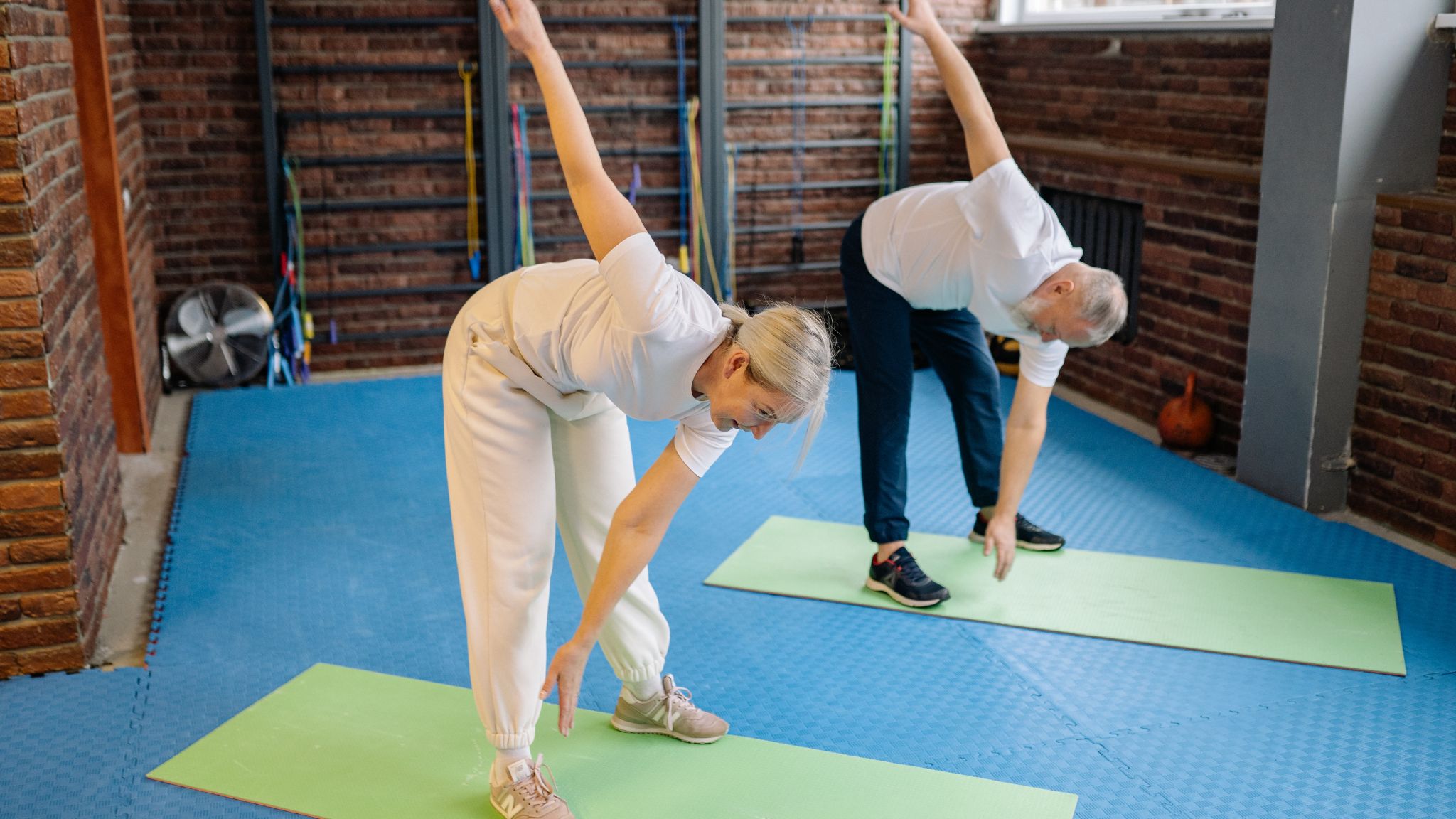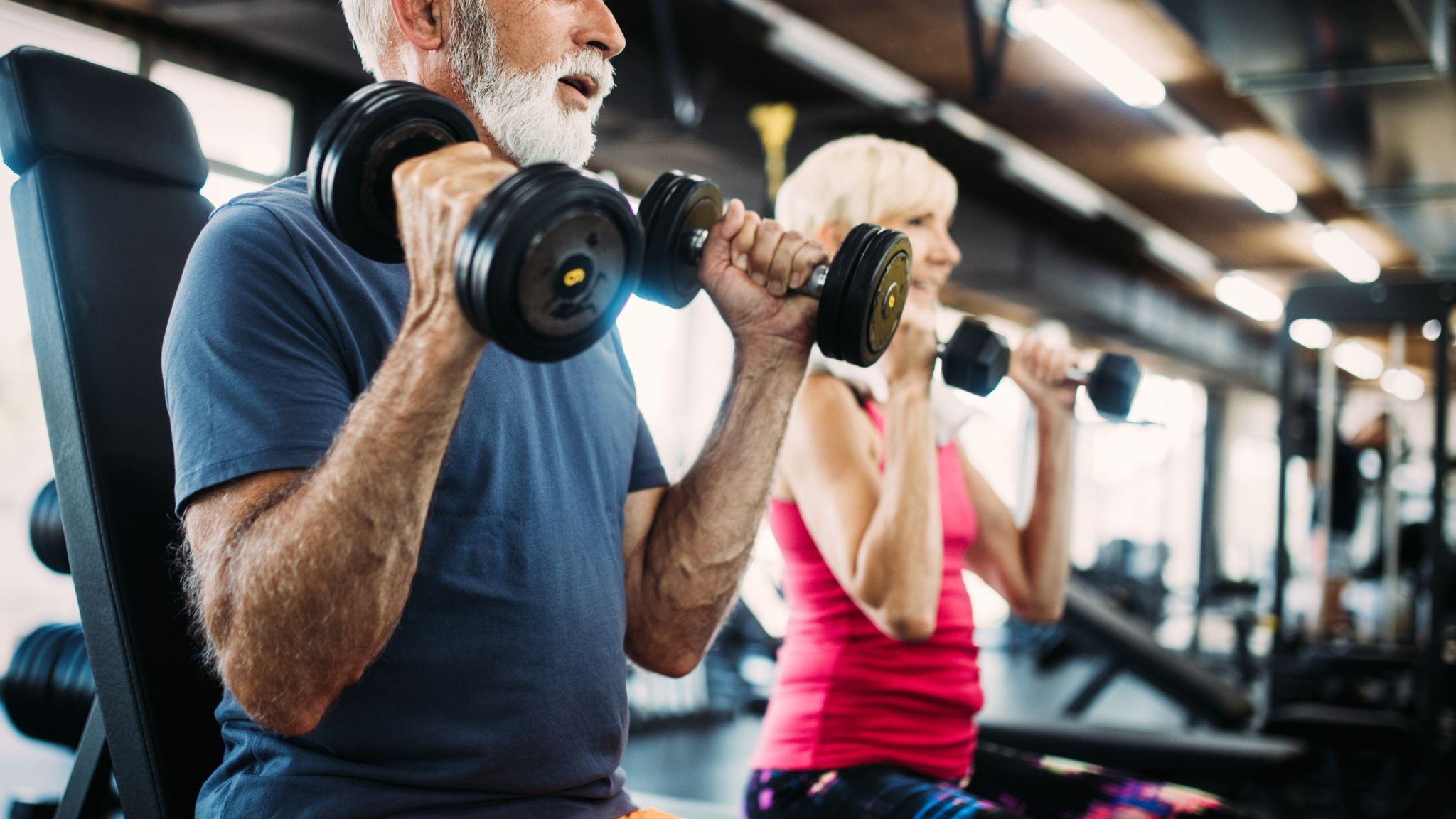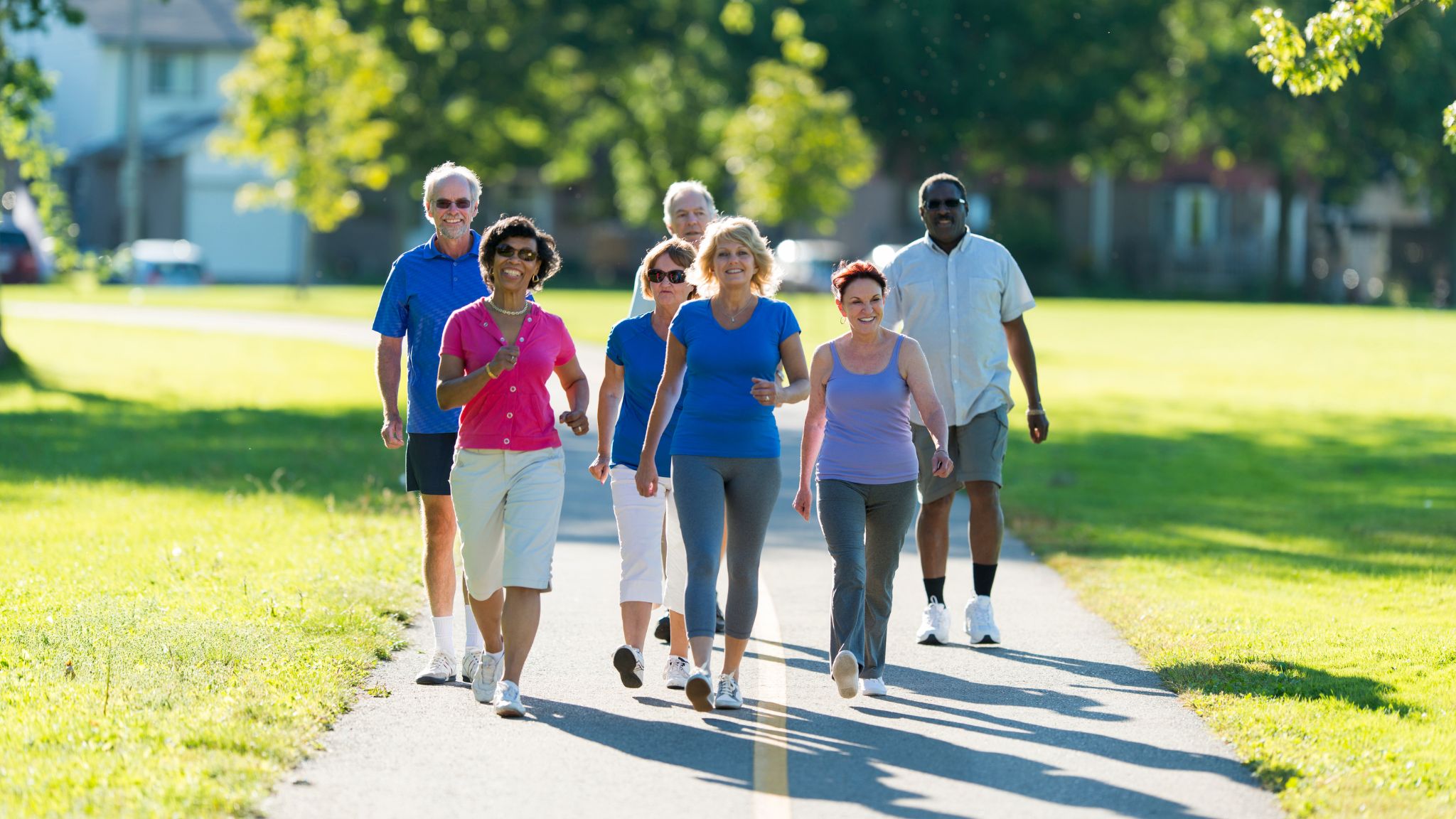
Exercise and Chronic Pain
Managing exercise with chronic pain can be a delicate balance. It’s essential to consult with a healthcare professional or a physical therapist who understands your condition before starting any exercise regimen. They can provide guidance on exercises that are safe and beneficial for your specific situation. Generally, here are some considerations:
Low-Impact Activities
Low-impact activities offer a gentle yet effective way to stay active and maintain fitness without placing excessive stress on the body. Especially beneficial for individuals with joint issues, chronic pain, or those recovering from injuries, these exercises prioritize movement while minimizing strain on muscles and joints. Embracing low-impact activities isn’t just about reducing stress; it’s about finding enjoyable ways to stay fit that are sustainable in the long run.
Swimming stands out as a quintessential low-impact exercise. The water’s buoyancy reduces pressure on joints, allowing for a full-body workout without the jarring impact often associated with high-impact activities. Whether it’s doing laps or water aerobics, swimming caters to various fitness levels and ages.
Cycling, both outdoors and on stationary bikes, is another fantastic low-impact option. It strengthens leg muscles while being easy on the knees and hips. The controlled, repetitive motion helps improve cardiovascular health and endurance without overtaxing the body.
For those seeking a simple yet effective workout, walking reigns supreme. It requires no special equipment, can be done almost anywhere, and offers myriad health benefits. Walking at a brisk pace elevates heart rate, burns calories, and contributes to overall well-being.
Additionally, elliptical machines provide a low-impact alternative to running. These machines simulate the motion of running without the forceful impact on joints, making them ideal for individuals with knee or hip issues.
Low-impact workouts prioritize safety and sustainability, making them suitable for people of all fitness levels. Incorporating these exercises into a routine fosters physical health while reducing the risk of injury, making fitness an enjoyable and attainable goal for everyone.
Stretching and Flexibility
Stretching and flexibility exercises are often undervalued in fitness routines, yet they play a pivotal role in enhancing overall well-being. Beyond the physical benefits, they contribute significantly to maintaining mobility, preventing injury, and improving posture.
Stretching exercises involve elongating muscles to improve flexibility and range of motion. They can be dynamic, involving movement, or static, where a position is held without movement. Yoga, renowned for its focus on stretching and flexibility, combines both dynamic and static stretches, enhancing not only physical suppleness but also mental relaxation and mindfulness.
Increased flexibility gained through stretching exercises helps alleviate muscle tension, reducing the risk of strains and injuries during physical activities. It also aids in improving posture by loosening tight muscles that can pull the body out of alignment.
Moreover, stretching contributes to better circulation and blood flow to the muscles, promoting quicker recovery after workouts and reducing muscle soreness. For individuals with sedentary lifestyles or those working long hours in a fixed position, stretching breaks can alleviate stiffness and prevent muscle imbalances.
Incorporating stretches into a daily routine, whether as a standalone practice or part of a workout regimen, offers numerous benefits. These exercises not only enhance physical performance but also foster a sense of relaxation and mental clarity. Prioritizing stretching and flexibility isn’t just about physical fitness; it’s a holistic approach to maintaining a balanced, healthy lifestyle.

Strength Training
Strength training stands as a cornerstone of fitness, offering a multitude of benefits that extend beyond merely building muscles. This form of exercise, often involving resistance or weights, plays a pivotal role in enhancing overall health and well-being.
At its core, strength training focuses on improving muscle strength, endurance, and power. It involves the use of resistance, whether through free weights, resistance bands, or bodyweight exercises like push-ups and squats. These exercises stimulate muscle fibers, encouraging them to adapt and grow stronger over time.
Beyond sculpting muscles, strength training provides a myriad of advantages. It aids in boosting metabolism, aiding in weight management by burning calories even after the workout ends. Additionally, it helps maintain bone density, crucial for preventing osteoporosis as we age.
Moreover, strength training offers functional benefits, enhancing daily activities by improving stability, balance, and posture. Strengthening the core muscles can alleviate lower back pain and enhance overall body mechanics, reducing the risk of injury in daily tasks or during other physical activities.
Engaging in a consistent strength training routine doesn’t require elaborate gym equipment. Bodyweight exercises, resistance bands, or simple dumbbells can effectively contribute to muscle development. Moreover, progressive overload—gradually increasing resistance or intensity—ensures continual improvement and prevents plateaus.
Whether it’s lifting weights, performing bodyweight exercises, or incorporating resistance bands, integrating strength training into a fitness regimen enhances not just physical appearance but overall health and functionality. It’s a fundamental component of a well-rounded fitness routine that promotes longevity, functional independence, and a healthier lifestyle.
Pacing Yourself
Pacing yourself in any endeavor, particularly in physical activities or challenging tasks, is an art that embodies balance, mindfulness, and self-awareness. It’s not just about avoiding burnout; it’s about achieving sustainable progress and preserving mental and physical well-being.
In the realm of fitness, pacing yourself means understanding your body’s limits and respecting them. It’s about finding the balance between pushing your boundaries for growth and preventing overexertion. Starting gradually and gradually increasing intensity or duration prevents injury and allows your body to adapt, fostering long-term success.
This principle extends beyond the gym. In work or personal projects, pacing yourself involves setting realistic goals, managing time effectively, and recognizing when to take breaks. The key is consistency over time rather than sprinting towards short-term objectives. Break tasks into manageable segments, focusing on quality rather than rushing through to meet deadlines.
Mindfulness plays a crucial role in pacing. Listen to your body’s signals. Notice signs of fatigue or stress, and honor the need for rest or adjustment. Embrace the idea that progress doesn’t always mean constant movement forward; it includes periods of rest and reflection.
Pacing yourself isn’t about complacency—it’s about strategic and sustainable progress. It’s a vital skill that nurtures resilience, prevents burnout, and cultivates a healthier approach to both physical and mental challenges. Whether in fitness, work, or personal endeavors, pacing ensures steady progress while safeguarding your well-being.
Proper Technique
Proper technique forms the bedrock of success and safety across various pursuits, from sports and fitness to craftsmanship and professional skills. It embodies the correct execution of movements or actions, ensuring optimal performance while minimizing the risk of injury or errors.
In fitness, adhering to proper technique is paramount. Whether lifting weights, performing yoga poses, or engaging in cardio exercises, executing movements correctly maximizes the effectiveness of the workout and reduces the likelihood of strain or injury. It involves understanding the mechanics of each exercise, maintaining alignment, and utilizing the appropriate muscle groups.
Beyond the gym, proper technique extends to daily activities and professions. From typing on a keyboard to using tools or performing surgery, each task demands specific skills and motions. Mastering the correct approach not only enhances efficiency but also mitigates potential physical strain or mistakes.
Learning proper technique often requires guidance. Working with a coach, trainer, mentor, or instructor who can provide feedback and corrections is invaluable. It involves practice, patience, and a willingness to refine movements until they become second nature.
Moreover, proper technique isn’t just about physical actions; it also encompasses mental focus and mindfulness. Being present in the moment, concentrating on the task at hand, and maintaining a mind-body connection significantly contribute to executing movements effectively.
In essence, embracing proper technique is an investment in long-term success and well-being. It fosters mastery, prevents injury, and ensures that tasks are accomplished with precision and efficiency. Across various disciplines, the emphasis on correct form and execution is a fundamental pillar of achieving excellence.

Warm-Up and Cool Down
The often overlooked yet crucial components of any workout routine are the warm-up and cool-down phases. These bookends to exercise play pivotal roles in preparing the body for physical activity and aiding its recovery post-workout.
A proper warm-up primes the body for exercise by gradually increasing heart rate, circulation, and body temperature. It typically involves low-intensity movements like jogging in place, dynamic stretching, or light cardio. This phase loosens muscles, increases flexibility, and mentally prepares you for the workout ahead. It also reduces the risk of injury by prepping muscles and joints for more strenuous activity.
The cool-down phase, often neglected, is as essential as warming up. It involves gradually decreasing the intensity of the workout and includes stretching and gentle movements. This phase helps lower heart rate, prevent dizziness, and aids in the removal of waste products like lactic acid from muscles, reducing soreness. Cool-downs also facilitate the gradual transition to a resting state, preventing blood pooling and potential post-exercise hypotension.
Both phases offer mental benefits as well. A warm-up mentally readies you for the workout, enhancing focus and motivation, while a cool-down helps transition your mind from an active state to a more relaxed one, reducing stress and promoting a sense of well-being.
Integrating warm-up and cool-down periods into your exercise routine is essential for optimizing performance, preventing injuries, and promoting overall fitness. They serve as the foundation for a safe and effective workout regimen, ensuring that your body is adequately prepared for exercise and recovers optimally afterward.
Mind-Body Techniques
Mind-body techniques encompass a spectrum of practices that foster a deeper connection between mental and physical well-being. These methods emphasize the interplay between thoughts, emotions, and bodily sensations, offering holistic approaches to health and self-care.
Meditation, a cornerstone of mind-body techniques, encourages mindfulness and awareness. By focusing on breathing or specific thoughts, meditation cultivates a sense of calm, reduces stress, and enhances mental clarity. Regular practice can lead to improved emotional regulation and resilience.
Yoga, combining physical postures with breathwork and meditation, epitomizes the integration of mind and body. It promotes flexibility, strength, and balance while simultaneously nurturing mental relaxation and inner peace. Its diverse forms cater to various fitness levels and can be adapted to individual needs.
Breathwork techniques, such as deep breathing or controlled breathing exercises, exert a profound influence on both the mind and body. They assist in managing stress, reducing anxiety, and improving concentration by regulating the autonomic nervous system.
Mindfulness practices encourage being present in the moment, observing thoughts and sensations without judgment. These techniques, often incorporated into daily activities, enhance self-awareness and decrease rumination, fostering a more balanced perspective on life’s challenges.
Biofeedback and progressive muscle relaxation are other mind-body techniques that utilize technology or systematic muscle tension release to alleviate stress and improve overall well-being.
Mind-body techniques empower individuals to take an active role in their health. By acknowledging the intricate connection between mind and body, these practices offer holistic approaches to managing stress, enhancing relaxation, and promoting overall wellness. Incorporating these techniques into daily routines can lead to profound improvements in both mental and physical health.